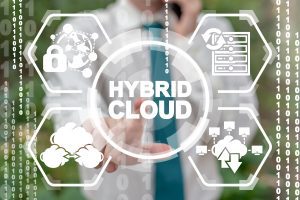Rewriting the IT Security Manual for the Cloud Era

Anurag Kahol, CTO at Bitglass, investigates the ‘people perimeter’ within workplace IT security and why our existing technologies are not designed with the cloud era in mind.
Digital transformation has caused a revolution, and workforce mobility has replaced the traditional on-premises approach. As a result, the focus of technology spend is increasingly shifting to users, devices, and data. The traditional ‘hub and spoke’ model where everything including applications, data and users lived inside the corporate network is no longer viable given the sheer amount of cloud applications that are consumed. Businesses today are looking for dynamic access to both internal applications and external cloud applications.
This requires a major review of how organisations view their perimeters as a more agile, distributed set of access and control points. Ultimately, today’s modern security should be about advancing strategies in a fast, safe way, all while understanding the language of the cloud.
Security and network teams must change their approach to keep pace with the needs of modern organizations. The first few years of enterprise cloud adoption focused on a core set of commonly used SaaS applications. More recently, we’ve seen an accelerated use of a wider set of industry-specific and niche applications and, of course, internal apps moving to the cloud. With this transition comes a need for total security and compliance for any application or device.
Key components of network security architecture for the cloud era should, therefore, be built from the ground up, as opposed to being bolted on to legacy solutions built for organisations functioning only on-premises or from only managed devices.
The people perimeter
The problem is that legacy security technology is not designed to secure data as it moves beyond the traditional idea of the ‘perimeter’ and into a variety of cloud apps and devices. Organisations need to re-evaluate the limits of their security platform to ensure that it holds firm against every eventuality, including the perennial weak links within the enterprise.
For example, more than ever before, employees are using their personal devices to perform their work duties. BYOD (bring your own device) enhances productivity and flexibility, but it can also lead to security concerns if the right security solutions are not put in place. Before Covid-19, BYOD was a significant trend, but just one of many on the security to-do lists of IT teams. The impact of the lockdown has shifted the goalposts, and new work-from-home arrangements have opened multiple attack vectors for cyberattacks, with people more likely to sign up for apps using their own Gmail email account, for example, quickly circumventing established security processes.
Similarly, when it comes to threats to enterprise cybersecurity, it is easier to focus on external third parties as the main source of risk. However, a considerable amount of data leakage comes as a result of insider threats – people within an enterprise, whether they divulge proprietary information with malevolent intentions, or are just careless employees that unwittingly share sensitive data.
Crucially, in building a security strategy for the cloud era, enterprises must also be cautious of disjointed solutions, as a disconnected approach may harm their ability to adapt swiftly in a highly remote and dynamic business environment.
For instance, the time and money associated with managing disjointed, disparate security tools can be effectively used elsewhere. In contrast, consolidating tools into a single platform can be highly effective, both operationally and in cost-effectiveness. Unfortunately, organisations often overlook architecture when considering practical security solutions. In doing so, they can saddle themselves with additional maintenance costs (such as employee time, upgrade requirements, and overhead expenses) associated with legacy and appliance-based solutions.
Architectures also claim to be cloud native when, in fact, they are merely hosted in private data centers. In practice, this means they still adhere to what is essentially an on-premises network model, and security vendors who build their solutions like this must continue to maintain data centres, stock them with hardware appliances for their customers and factor this into their pricing and service models.
Security threats and vulnerabilities change every day – that’s a given, and these issues require IT teams to remain vigilant and agile in the face of new challenges. In dealing with the here and now, however, what can’t be overlooked is the fundamental shift in infrastructure and network security brought about by the growth of cloud. Only by viewing security strategies in the context of these macro trends can organisations update their rule book to more effectively meet challenges head on, both now and in the future.
